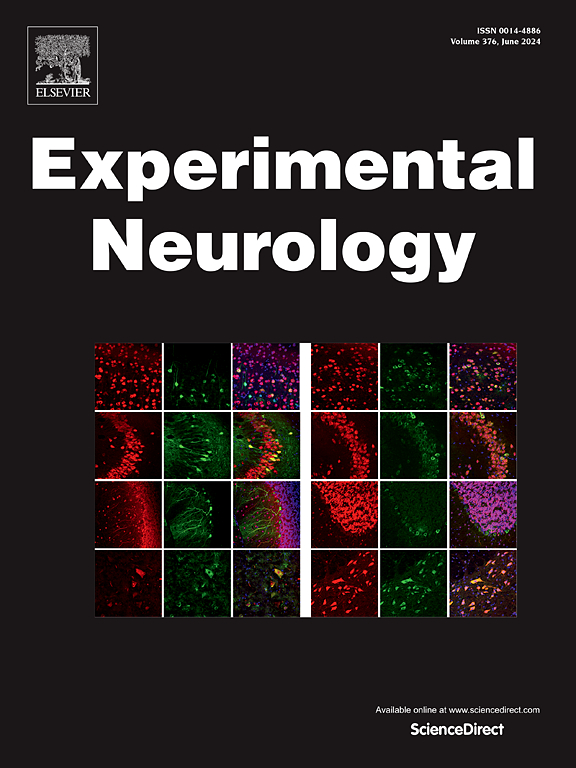Gastrodin alleviates Aβ25–35-induced glycolytic dysfunction via activating PI3K/AKT/BACH1 signaling in Alzheimer's disease models
IF 4.6
2区 医学
Q1 NEUROSCIENCES
引用次数: 0
Abstract
Cerebral glycolytic alteration has been identified as an important contributor to the pathological progress of Alzheimer's disease (AD). Research has shown that gastrodin (GAS) possesses neuroprotection in various experimental models of AD, but its specific mechanism remains unclear. In this study, we determined whether GAS exerted neuroprotective effects on AD models through regulating PI3K/AKT/BACH1 signaling axis. Eight-week-old C57BL/6 J male mice were intracerebroventricularly injected with Aβ25–35, to establish an AD model, followed by the administration of GAS (30, 60 mg·kg−1·d−1, i.g.) for 21 days. Treatment of GAS markedly alleviated the downregulation of p-PI3K Tyr199/458, p-AKT Ser473, BACH1 and HK1 in the hippocampus of the Aβ25–35-induced AD mice. To further explore the mechanism of GAS-mediated neuroprotection, an in vitro AD cellular model was established by challenging HT22 cells with Aβ25–35. In the Aβ25–35 induced cells, the expression of BACH1, p-PI3K Tyr199/458 and p-AKT Ser473 was reduced, the mRNA and protein levels of HK1 were decreased, and the levels of pyruvate and ATP were reduced. After treatment of GAS, the decline of these indicators was reversed. In addition, overexpression of BACH1 by lentivirus transfection significantly upregulated the mRNA and protein levels of HK1, thereby enhancing glycolytic function and protecting HT22 cells from Aβ25–35-induced injury. The results of chromatin immunoprecipitation assay-real-time quantitative PCR revealed that BACH1 directly bound to the HK1 promoter region. Collectively, these findings suggest that GAS can play a protective role in Aβ25–35-induced experimental AD models by increasing HK1 expression and ameliorating glycolytic dysfunction through activation of the PI3K/AKT/BACH1 signaling axis.
求助全文
约1分钟内获得全文
求助全文
来源期刊

Experimental Neurology
医学-神经科学
CiteScore
10.10
自引率
3.80%
发文量
258
审稿时长
42 days
期刊介绍:
Experimental Neurology, a Journal of Neuroscience Research, publishes original research in neuroscience with a particular emphasis on novel findings in neural development, regeneration, plasticity and transplantation. The journal has focused on research concerning basic mechanisms underlying neurological disorders.
 求助内容:
求助内容: 应助结果提醒方式:
应助结果提醒方式:


